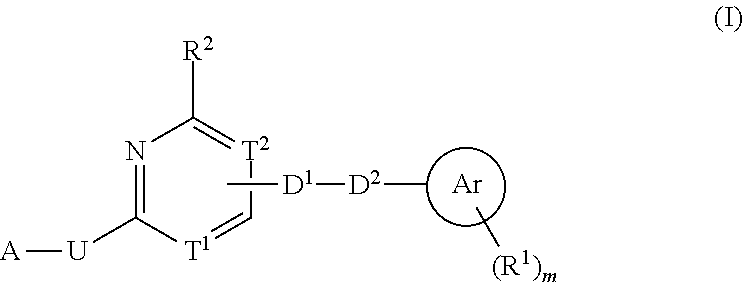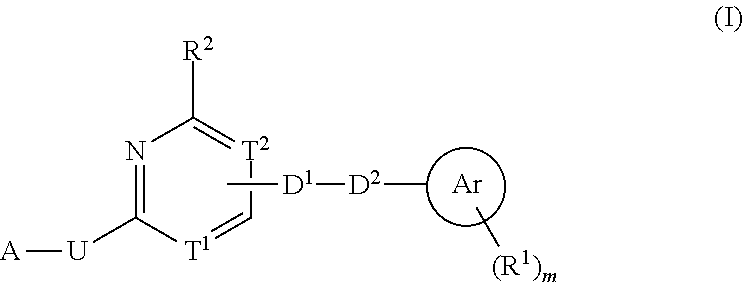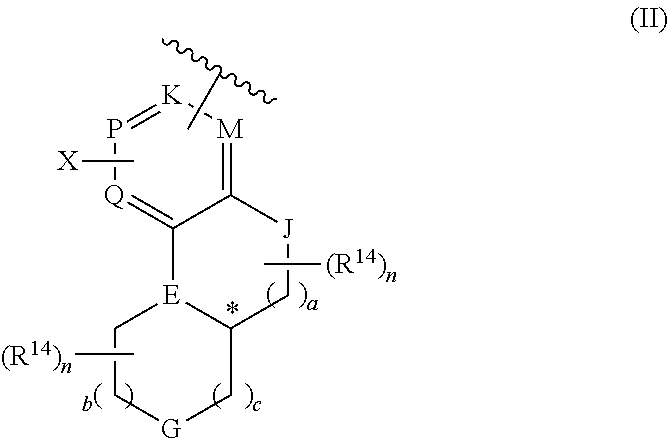Heterocyclic compound used as FGFR inhibitor
a technology of heterocyclic compounds and inhibitors, applied in the field of new drugs, can solve the problems of drug resistance, rapid growth and spread of cancer cells, and the effect of affecting the survival rate of patients
- Summary
- Abstract
- Description
- Claims
- Application Information
AI Technical Summary
Benefits of technology
Problems solved by technology
Method used
Image
Examples
example 1
Preparation of Compound 1
[0214]
[0215]Compound 1a (5.00 g, 47.6 mmol) and triethylamine (24.1 g, 239 mmol) were dissolved in 200 mL of dichloromethane, and a solution of compound 1b (32.0 g, 144 mmol, dissolved in 100 mL of dichloromethane) was added dropwise with stirring at room temperature. After stirring at room temperature for 5 hours, TLC monitored the completion of the reaction, followed by the addition of 100 mL of water to quench the reaction. The organic phase was separated and the aqueous layer was extracted twice with dichloromethane. The combined organic phases were washed with water (100 mL) and brine (100 mL). The organic layer was dried over anhydrous sodium sulfate, then filtered, and the filtrate was concentrated under reduced pressure, the residue was purified via flash column chromatography (petroleum ether:ethyl acetate=1:1) to afford compound 1c as a yellow solid (15 g, yield 48%).
[0216]Compound 1d (1.0 g, 6.45 mmol), potassium carbonate (1.87 g, 13.6 mmol), and...
example 2
Preparation of Compound 2
[0223]
[0224]Compound 2a (37 mg, 0.17 mmol) and 1j (25 mg, 0.17 mmol) were dissolved in a 1:2 trifluoroacetic acid / water mixed solvent (2 mL). The reaction mixture was heated to 100° C. The reaction was monitored by LC-MS and the reaction was cooled to room temperature upon completion. The mixture was concentrated under reduced pressure, the residue was purified via preparative TLC (DCM:MeOH=20:1) to afford compound 2b (13 mg, yield 23%) as a pale solid. 1H NMR (400 MHz, CD3OD) δ 7.96 (s, 1H), 6.89-6.72 (m, 3H), 5.62 (s, 1H), 4.27-4.20 (m, 1H), 4.00-3.91 (m, 1H), 3.79-3.71 (m, 1H), 3.16-3.05 (m, 1H), 3.03-2.95 (m, 1H), 2.93-2.85 (m, 11H), 2.78 (s, 3H), 2.79-2.68 (m, 1H), 2.36 (s, 3H), 2.36-2.25 (m, 1H), 1.97-1.84 (m, 1H); MS 327.2 [M+H]+.
[0225]Compound 2b (13 mg, 0.04 mmol) and 1m (10 mg, 0.04 mmol) were dissolved in anhydrous toluene (1 mL). The reaction mixture was stirred and heated to 100° C. The reaction was monitored by LC-MS. After the reaction was com...
example 3
Preparation of Compound 2S
[0226]
[0227]Compound 2Sa (3.0 g, 18.8 mmol), compound 2Sb (3.0 g, 13.8 mmol, 100% ee) and potassium hydroxide (2.4 g, 42.8 mmol) were added sequentially to 30 mL DMSO while stirring. The reaction mixture was heated to 30° C. for 3 hours and then warmed to 60° C. for 5 hours. After completion of the reaction, the system was cooled to room temperature, 300 mL of water was added, precipitation formed, and stirring was continued at room temperature overnight. Solid was collected via filtering, and and was added to 25 mL of a mixed solvent consisting of 5:1 petroleum ether:ethyl acetate, and stirred at room temperature for half an hour. The solid was collected via filtering, and was dried to give compound 2Sc (3.0 g, yield 64%) as a yellow solid. MS 336.2 [M+H]+.
[0228]Compound 2Sc (2.0 g, 6.0 mmol) was dissolved in 20 mL, dichloromethane, 5 mL trifluoroacetic acid was added at room temperature while stirring. After stirring at room temperature for 1 hour, TLC sh...
PUM
| Property | Measurement | Unit |
|---|---|---|
| temperature | aaaaa | aaaaa |
| reaction time | aaaaa | aaaaa |
| reaction time | aaaaa | aaaaa |
Abstract
Description
Claims
Application Information
 Login to View More
Login to View More - R&D
- Intellectual Property
- Life Sciences
- Materials
- Tech Scout
- Unparalleled Data Quality
- Higher Quality Content
- 60% Fewer Hallucinations
Browse by: Latest US Patents, China's latest patents, Technical Efficacy Thesaurus, Application Domain, Technology Topic, Popular Technical Reports.
© 2025 PatSnap. All rights reserved.Legal|Privacy policy|Modern Slavery Act Transparency Statement|Sitemap|About US| Contact US: help@patsnap.com



